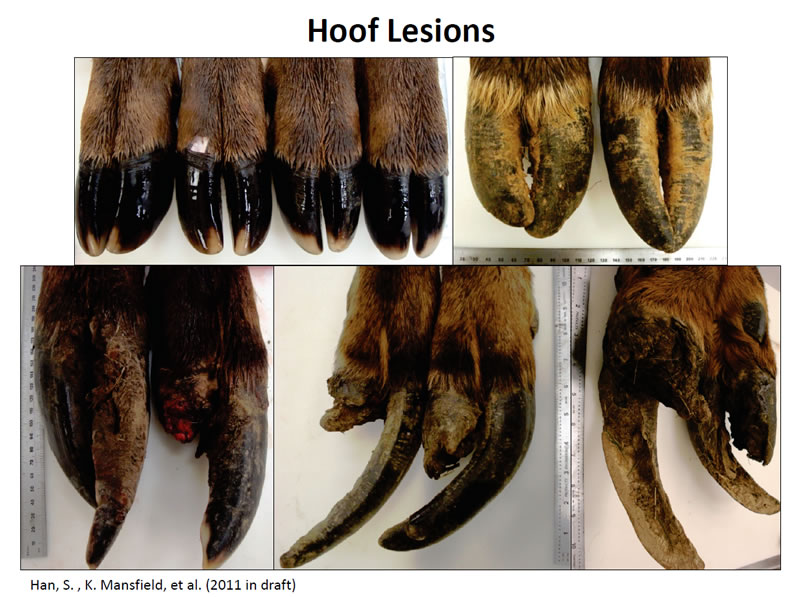LONGVIEW — More than a dozen hunters and landowners here have told the state Department of Fish and Wildlife what it already knows: hoof disease in Southwest Washington elk is a big problem and is spreading.
“The agency is really concerned,” Sandra Jonker, regional wildlife program manager, said at public meeting Monday about the problem. “We don’t know what is causing it or why.”
Wildlife officials started getting sporadic reports in the 1990s about elk with deformed hoofs.
But in the past five years, incidents of elk with bad feet increased dramatically.
The center of the problem appears to be in the Cowlitz River basin including western Cowlitz, eastern Wahkiakum and southern Lewis counties.
“But in the last few years, it’s spreading geographically — much wider distribution,” Jonker said.
There are dozens of hoof diseases in livestock, with differing causes such as infections, toxicity in the environment and nutritional reasons.
Kristin Mansfield, a Department of Fish and Wildlife veterinarian, said in many cases the elk’s hoof grows long initially, then breaks off and festers.
“It is similar to a lot of different diseases, but is not a direct match to any of them,” Mansfield said.
Hoof deformities in Southwest Washington elk affect both males and females, old and young, and any hoof, Jonker said.
The department has done necropsies on affected elk, examining tissues, limbs, blood, feces and fetuses.
But what the department has are a zillion questions and not many answers yet, she said.
The agency is working with a network of universities, veterinarians and researchers trying to determine what data needs to be collected to even begin to search for answers, she said.
“It’s probably a combination of multiple factors needing a lot more research of what’s causing it,” Jonker said.
Hunters and landowners from Ryderwood, Stella, Rose Valley, Silver Lake, Grays River and elsewhere took turns telling about seeing elk struggling and dying with deformed hoofs.
The department moved too slowly on hair-loss syndrome in blacktail deer and needs to do better with the elk, several in attendance at Monday’s meeting said.
“We’re going to try to get to it as soon as we can,” said Mick Cope, regional wildlife program manager for the coastal counties and Olympic Peninsula.
Even if a solution was known, wildlife officials might not be able to treat free-ranging elk in the wild, Jonker added.
Can elk with deformed hoofs be eaten?
Jonker said if just the hoof and part of the limb is deformed the rest of the elk probably can be consumed.
“Your nose is probably your best test, however use your best judgement” she said.
Dan Cothren, a Wahkiakum County commissioner, said more data is needed and collecting information will require funding.
He urged elk enthusiasts to pressure their state lawmakers to provide adequate money.
“We take it seriously in Wahkiakum County,” Cothren said. “I’m not going to let this thing go away.”




